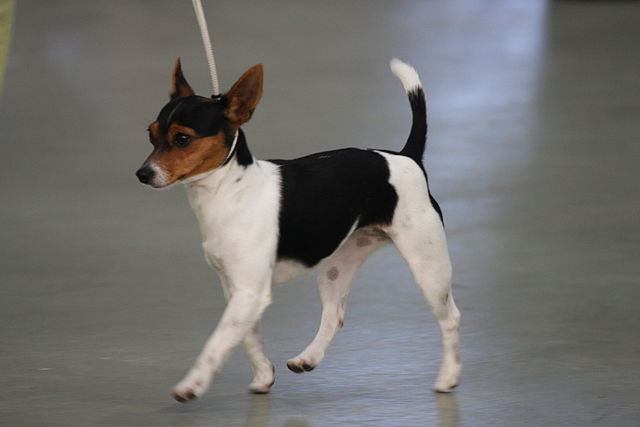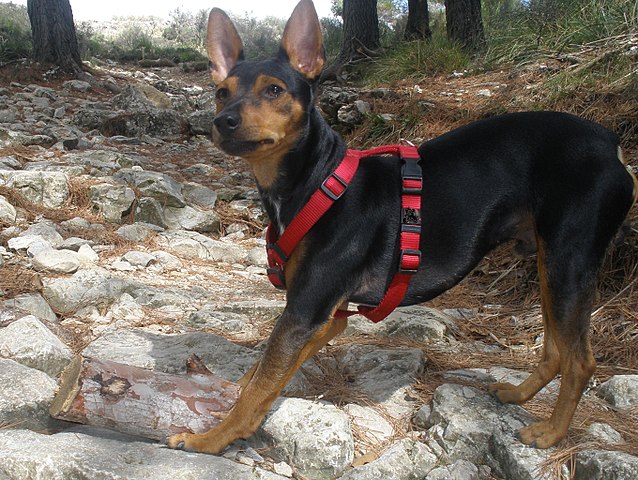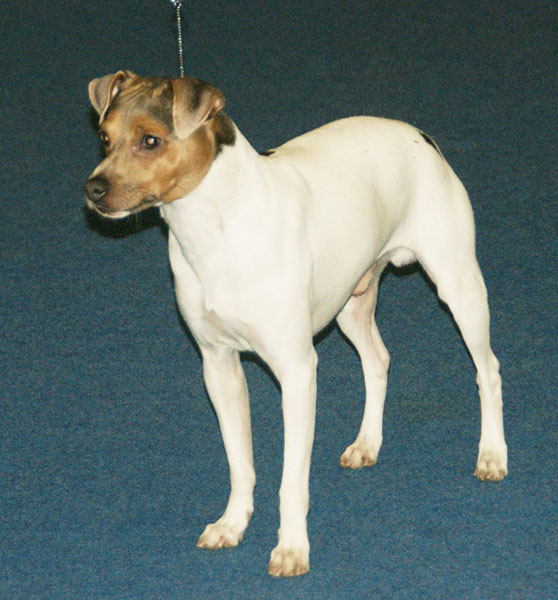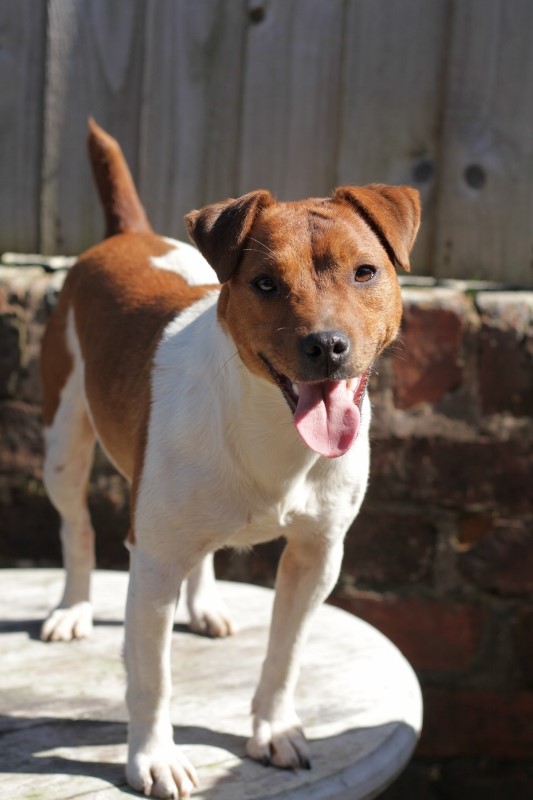The Tenterfield Terrier was developed in Australia but his ancestors originated in England. Ancestors included the now extinct Old English White Terrier as well as Fox Terriers and Fox Terrier-type dogs. These little dogs were created with the purpose of riding in saddlebags and accompanying their owners on horseback to hunt with the hounds, as well as “going to ground” and dispatching vermin. It was important that they be small so that they could more easily do these particular jobs. Unlike many terriers, they were not only used for rodents but also for hunting rabbits and even fox! Because of their abilities, they were a favorite breed often seen on Australian farms in the 19oo’s – and at the time were called “Mini Foxies”. Despite being around since the early 1800’s, they weren’t officially recognized by the ANKC (Australian National Kennel Council) until 2002. They are not recognized at all in the United States.
Tenterfields are particularly strong and robust for their size. Nimble, lively and incredibly bold when needed, these are true working terriers with a spirit as brave as their bodies are strong. After a good day of hunting, they make loyal and loving companions in the home and are content to lay next to their owners for hours. Their ability to be gentle with both the very young as well as very old is one of the many reasons they have been popular abroad. They are not intimidated by loud children and instead seem to enjoy hours of playtime and revel in getting all they can out of life! They also do very well with other pets and are even often paired with other dogs to keep their (often larger) counterparts company. Most of the time they get along with no issues even in larger packs of dogs, although will absolutely stand up for themselves if necessary.
Tenterfield Terriers can be vocal when excited, which may make them seem intimidating to non-dog folk. This said, although they will defend themselves if they feel threatened they are not normally an aggressive breed at all. In fact they are quite outgoing and easy to take on vacations or gatherings. Not only are they social, but their size even makes them easy to transport!
“Tenties”, as they are affectionately known, are quick learners and enjoy dog sports. In Australia, it is not uncommon to see them competing in agility, earth dog trials, tracking, competitive obedience, nosework, trick training, rally, coursing, and flyball as well as the show ring. Some have even become phenomenal assistance dogs! This is a highly intelligent breed that is versatile and adaptable to learning most anything!
At this time the Tenterfield Terrier maintains an open stud book. This means that someone who has a dog which looks like a Tentie, although is not, can get the dog accepted as a “first generation Tenterfield”. After five generations those puppies can be officially registered as Tenterfields. This is done with the hope that genetic bottlenecks will be avoided and the breed will continue to be healthy. Every five years, the council for the breed will reevaluate the situation and vote whether to close the studbook or keep it open for the next five years. There are a number of stipulations that must be followed , including anyone who is pursuing this project be a member of the breed club. All first generation Tenterfields must have several health tests completed and be microchipped in order to be considered.
The Tenterfield can be born with any length of tail – from no tail whatsoever (these dogs are referred to as “rumpies”) to short stubs, to a full length tail and anywhere in between! A dog born with no tail is not hindered by any health issues whatsoever, and the breed standard doesn’t favor any type of tail as long as it is set on and carried correctly. In general the main issues that are seen in the breed (although only occasionally) are Primary Lens Luxation and Congenital Hypothyroidism with Goiter, and neither is related to tail length. In the latter condition, puppies do not live beyond 6 weeks. Responsible breeders test their dogs to steer away from these health issues. Overall, many Tenties live an average of 16-17 years with some even living to 20!
The Tentie is quite rugged. He is said to be able to live outdoors (with appropriate shelter), which is highly unusual for other dogs of his size. Most outside-Tenties are assigned with the duty of keeping rats and mice off the property – a job done without any training. Of course, in the case of an outside dog he should still be provided with plenty of affection and attention – this little terrier needs frequent human contact. This breed can also go on walks for up to several miles if the owner were so inclined! Despite having the vitality to satisfy even high-energy owners, he is fully capable of living in small spaces with limited yard space as long as his exercise needs are met.




